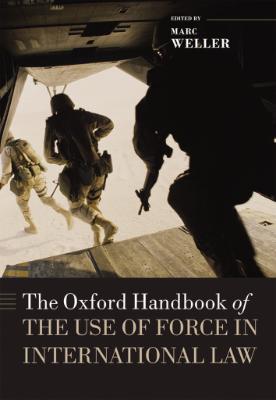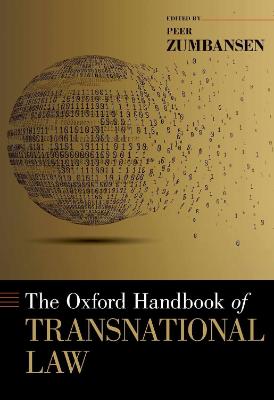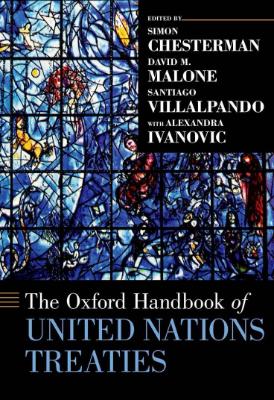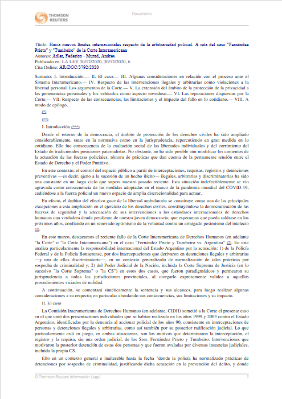
|
The Oxford Handbook of the Use of Force in International Law
This Oxford Handbook is a comprehensive and authoritative study of the modern law on the use of force. Over 50 experts in the field offer a detailed analysis, and to an extent a restatement, of the law in this area. The Handbook reviews the status of the law on the use of force and assesses what changes, if any, have occurred as a result of recent developments. It offers cutting-edge and up-to-date scholarship on all major aspects of the prohibition of the use of force. Part I reviews the history of the subject and its recent challenges, and addresses the major conceptual approaches. Part II covers collective security, in particular the law and practice of the UN organs, and of regional organizations and arrangements. Part III considers the substance of the prohibition of the use of force and the right to self-defence and associated doctrines. Part IV is devoted to armed action undertaken on behalf of peoples and populations, including self-determination conflicts, resistance to armed occupation, and forcible humanitarian and pro-democratic action. The possibility of the revival of classical, expansive justifications for the use of force is addressed in Part V, followed by Part VI which considers new security challenges and the emerging law in relation to them. Part VII ties the key arguments developed in the book into a substantive conclusion. The Handbook is essential reading for scholars and students of international law and the use of force, and legal advisers to both governments and NGOs.
|

|
The Oxford Handbook of Transnational law
The Oxford Handbook of Transnational Law offers a comprehensive compendium for the field of transnational law by providing a unique and unparalleled treatment and presentation in an area that has become one of the most intriguing and innovative developments in legal doctrine, scholarship, theory, and practice today. This in itself constitutes an ambitious editorial project, not only within law and legal doctrine but also with regard to an increasing interest in an interdisciplinary engagement of law with social sciences—including sociology, anthropology, political science, geography, and political theory. Closely tied into the substantive transformation that many legal fields are undergoing is the observation that many of these developments are driven by changes in an increasingly global legal practice today. The concept, then, of “transnational law” aims at capturing the distinctly border-crossing nature even of those legal fields which had for the longest been time been seen as having merely “domestic” relevance. This shift requires a conscious effort also among law school classroom instructors, casebook authors, and curriculum reformers to adapt their teaching content to these circumstances. As the authors of this Handbook make clear, this adaptation requires a close dialogue between a scholarly investigation into the transnational concept of law and the challenges faced by practicing lawyers, be that as solicitor, in-house counsel, judges, or bureaucrats in a globalized regulatory and socio-economic environment. While the main thrust of the Handbook is on the transnationalization of legal doctrine and legal theory, with a considerable contribution from and engagement with social sciences, the Handbook features numerous reflections on the relationship between transnational law and legal practice.
|
|

|
The Oxford Handbook of United Nations Treaties
The United Nations is a vital part of the international order. Yet this book argues that the greatest contribution of the UN is not what it has achieved (improvements in health and economic development) or avoided (global war or the use of weapons of mass destruction). It is, instead, the process through which the UN has transformed the structure of international law to expand the range and depth of subjects covered by treaties. The book offers the first sustained analysis of the UN as a forum in which and an institution through which treaties are negotiated and implemented. Chapters are written by authors from different fields, including academics and practitioners, lawyers and specialists from other social sciences (international relations, history, science), professionals with an established reputation in the field, and younger researchers and diplomats involved in the negotiation of multilateral treaties and scholars with a broader view on the issues involved. The volume provides unique insights into UN treaty-making. Through the thematic and technical parts, it also offers a lens through which to view challenges lying ahead and the possibilities and limitations confronting this understudied aspect of international law and relations.
|
|
|
Pandemia, direito e fraternidade: Um mundo novo nascerá
A presente obra “Pandemia, Direito e Fraternidade” traz consigo um grande desafio em meio a um cenário de desolação, de perdas e inúmeras dores, que a todos aflige: trazer esperança. Mas como conferir luz para esses dias desesperançados, em que o “mal” inaugurado pela Covid-19 tem a capacidade de nos arrastar para uma reflexão, cuja conclusão parece não querer nos convencer do contrário? Ora a “realidade do mal” – se assim pudermos taxá-la – e a premente necessidade de sua solução, tal qual uma redenção – nos propõe uma solução que custa a chegar e mesmo anunciada pelo “vai passar” – não parece convencer a quem já está exaurido da promessa tardia da esperança de dias sem pandemia. Desse dilema não estamos livres.
|
|
|

|
Hacia nuevos límites internacionales respecto de la arbitrariedad policial. A raíz del caso "Fernández Prieto" y "Tumbeiro" de la Corte Interamericana
Desde el retorno de la democracia, el ámbito de protección de los derechos civiles ha sido ampliado considerablemente, tanto en la normativa como en la jurisprudencia, repercutiendo en gran medida en lo cotidiano. Ello fue consecuencia de la exaltación social de las libertades individuales y del corrimiento del Estado de tradicionales posiciones paternalistas. No obstante, no ha sido posible aún modificar los cimientos de la actuación de las fuerzas policiales, rémora de prácticas que dan cuenta de la permanente tensión entre el Estado de Derecho y el Poder Punitivo.
En este contexto, el control del espacio público a partir de interceptaciones, requisas, registros y detenciones preventivas —es decir, ajeno a la sucesión de un hecho ilícito— ilegales, arbitrarias y discriminatorias ha sido una constante en un largo ciclo que supera nuestro pasado reciente. Esta situación indefectiblemente se vio agravada como consecuencia de las medidas adoptadas en el marco de la pandemia mundial del COVID-19, cediéndose a la fuerza policial un nuevo espacio de amplia discrecionalidad para actuar.
|
|
|
Pandemia por COVID-19 y grupos de riesgo. Consideraciones médico legales al requerimiento de los magistrados
El riesgo que representa la actual pandemia COVID-19 en las cárceles en términos de riesgo de transmisión, exposición y daño a las personas que se infectan es mucho mayor que de la población general. Así lo han expresado diferentes organismos internacionales, enfatizando en la mayor vulnerabilidad de salud de la población carcelaria representada por diferentes entidades mórbidas, que configuran grupos de riesgo al COVID-19. En este marco de situación, el informe médico forense al requerimiento de un magistrado conforme a una determinada patología considerada como de riesgo, será determinante aunque no vinculante, de la medida a adoptar por parte de la justicia.
|
|
|
|
|